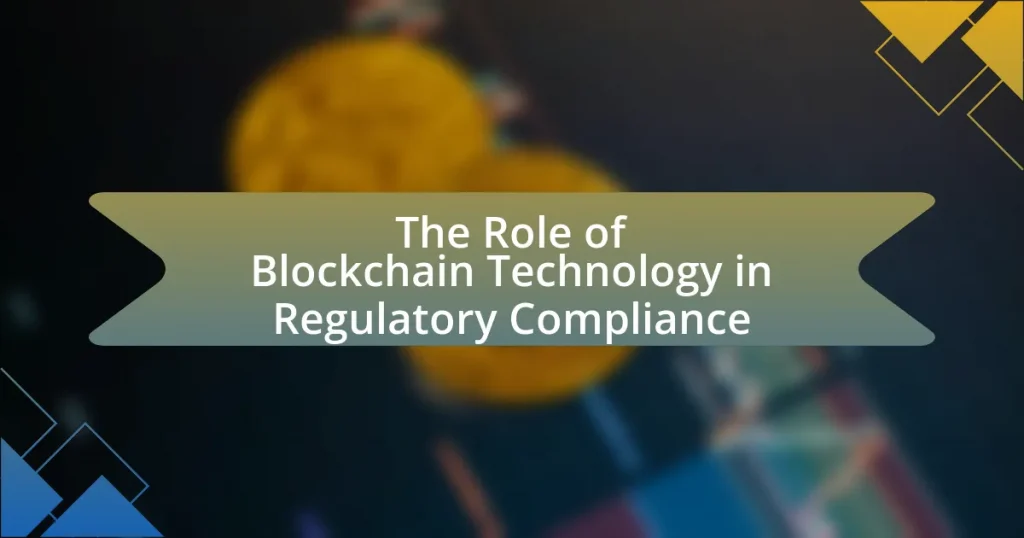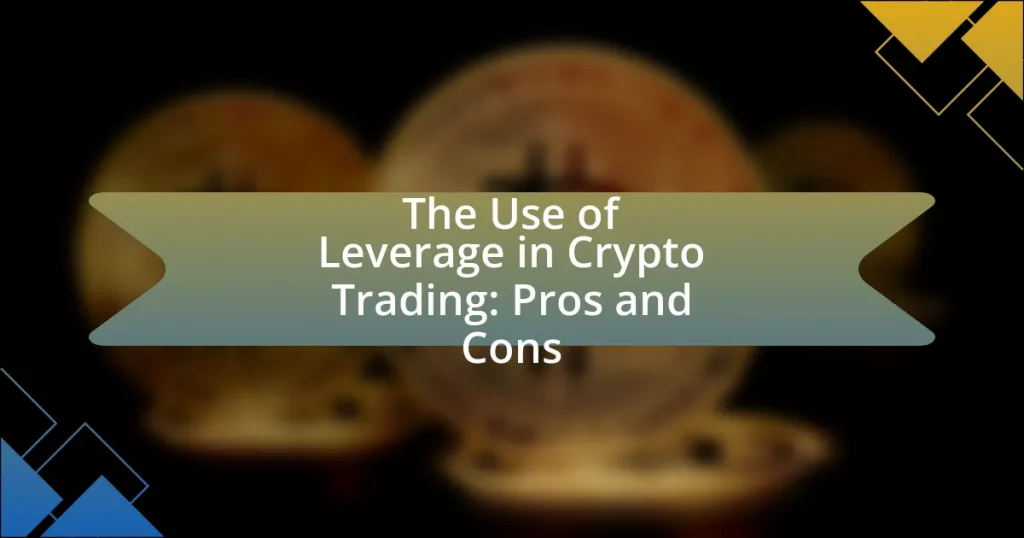Blockchain technology is increasingly recognized for its significant role in regulatory compliance across various industries. By providing enhanced transparency, traceability, and security in data management, blockchain facilitates real-time auditing and reduces compliance costs by automating processes. Key features such as immutability and decentralized record-keeping support adherence to regulations like anti-money laundering (AML) and data protection laws. However, challenges remain, including regulatory uncertainty and data privacy concerns, which organizations must navigate to effectively implement blockchain solutions for compliance. The article explores these aspects, highlighting practical applications, industry-specific use cases, and future trends in blockchain technology and regulatory frameworks.
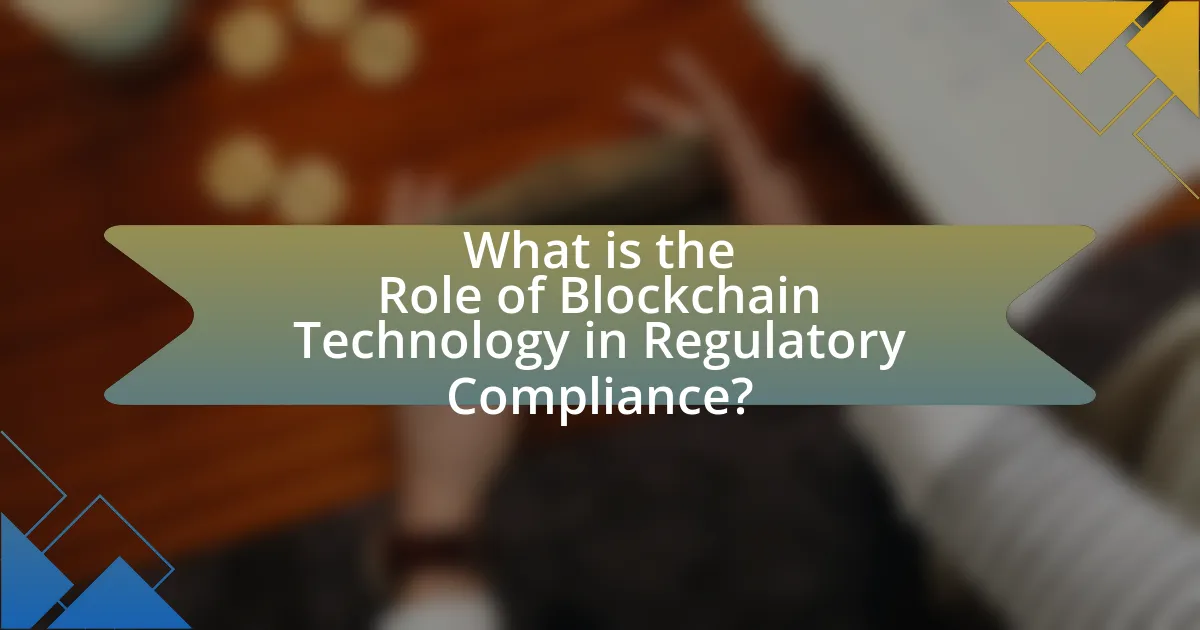
What is the Role of Blockchain Technology in Regulatory Compliance?
Blockchain technology plays a crucial role in regulatory compliance by enhancing transparency, traceability, and security in data management. Its decentralized nature allows for immutable record-keeping, which ensures that all transactions are permanently recorded and can be audited in real-time. For instance, in the financial sector, blockchain can facilitate compliance with anti-money laundering (AML) regulations by providing a clear and unalterable trail of transactions, thereby reducing the risk of fraud. Additionally, studies have shown that implementing blockchain can decrease compliance costs by up to 30% by automating processes and reducing the need for intermediaries. This combination of features makes blockchain a powerful tool for organizations striving to meet regulatory requirements efficiently and effectively.
How does blockchain technology enhance regulatory compliance?
Blockchain technology enhances regulatory compliance by providing a transparent, immutable ledger that allows for real-time tracking and verification of transactions. This transparency ensures that all parties involved can access the same information, reducing the risk of fraud and errors. For instance, in the financial sector, blockchain can facilitate compliance with anti-money laundering (AML) regulations by enabling the automatic recording of transactions and the identification of suspicious activities through smart contracts. According to a report by the World Economic Forum, blockchain can reduce compliance costs by up to 30% by streamlining processes and minimizing the need for intermediaries.
What are the key features of blockchain that support compliance?
The key features of blockchain that support compliance include transparency, immutability, and traceability. Transparency allows all participants in a blockchain network to access the same information, ensuring that data is visible and verifiable, which is crucial for regulatory oversight. Immutability ensures that once data is recorded on the blockchain, it cannot be altered or deleted, providing a reliable audit trail that regulators can trust. Traceability enables the tracking of transactions and assets throughout their lifecycle, facilitating compliance with regulations that require detailed record-keeping and reporting. These features collectively enhance accountability and reduce the risk of fraud, making blockchain a powerful tool for meeting compliance requirements in various industries.
How does transparency in blockchain contribute to regulatory adherence?
Transparency in blockchain enhances regulatory adherence by providing immutable and publicly accessible records of transactions. This visibility allows regulators to monitor compliance in real-time, ensuring that organizations adhere to legal and regulatory standards. For instance, the European Union’s General Data Protection Regulation (GDPR) emphasizes accountability, and blockchain’s transparent nature facilitates the tracking of data usage and consent, thereby supporting compliance efforts. Additionally, the ability to audit transactions on a blockchain reduces the risk of fraud and enhances trust between stakeholders, further aligning with regulatory requirements.
Why is regulatory compliance important in various industries?
Regulatory compliance is crucial in various industries because it ensures adherence to laws and regulations, thereby minimizing legal risks and enhancing operational integrity. Compliance protects organizations from penalties, fines, and reputational damage, which can arise from non-compliance. For instance, in the financial sector, regulatory frameworks like the Dodd-Frank Act mandate transparency and accountability, which help prevent fraud and promote consumer trust. In healthcare, compliance with regulations such as HIPAA safeguards patient information, ensuring confidentiality and security. These examples illustrate that regulatory compliance not only mitigates risks but also fosters a culture of ethical business practices across industries.
What are the consequences of non-compliance in financial services?
Non-compliance in financial services can lead to severe penalties, including hefty fines, legal repercussions, and reputational damage. Regulatory bodies, such as the Financial Conduct Authority (FCA) and the Securities and Exchange Commission (SEC), impose fines that can reach millions of dollars for violations, as seen in cases like the $5 billion fine imposed on Wells Fargo for fraudulent practices. Additionally, non-compliance can result in the revocation of licenses, restricting a firm’s ability to operate in the market. The long-term impact includes loss of customer trust and market share, as clients prefer to engage with compliant institutions.
How does compliance impact the healthcare sector?
Compliance significantly impacts the healthcare sector by ensuring adherence to laws and regulations that govern patient safety, data privacy, and quality of care. This adherence helps healthcare organizations avoid legal penalties, enhance operational efficiency, and build trust with patients. For instance, compliance with the Health Insurance Portability and Accountability Act (HIPAA) mandates strict data protection measures, which, when followed, reduce the risk of data breaches and associated costs. Furthermore, organizations that maintain compliance often experience improved patient outcomes and satisfaction, as they are required to follow best practices in care delivery.
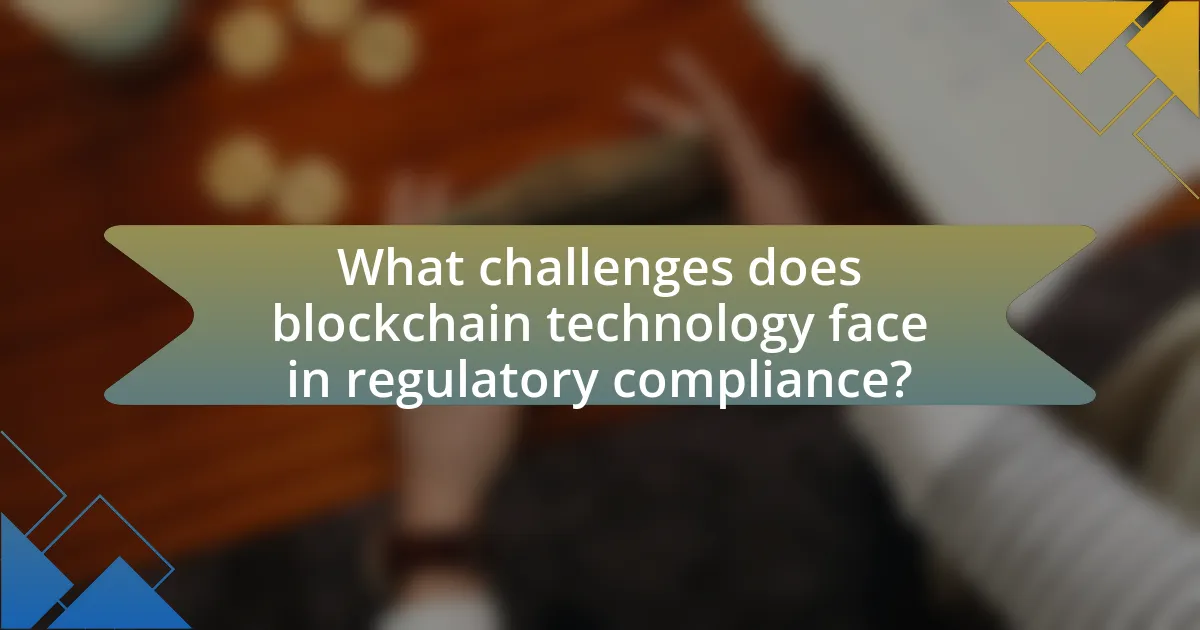
What challenges does blockchain technology face in regulatory compliance?
Blockchain technology faces significant challenges in regulatory compliance primarily due to its decentralized nature, which complicates the identification of responsible parties. This decentralization leads to difficulties in enforcing regulations that typically require accountability and traceability, as seen in traditional financial systems. Additionally, the lack of universally accepted standards and regulations across jurisdictions creates inconsistencies, making it challenging for blockchain applications to comply with varying legal frameworks. For instance, the Financial Action Task Force (FATF) has issued guidelines that require virtual asset service providers to adhere to anti-money laundering (AML) and counter-terrorism financing (CTF) regulations, yet the implementation of these guidelines varies widely among countries. Furthermore, the pseudonymous nature of transactions on many blockchain platforms raises concerns regarding user privacy and data protection, which can conflict with regulations like the General Data Protection Regulation (GDPR) in Europe. These factors collectively hinder the ability of blockchain technology to achieve seamless regulatory compliance.
How do legal frameworks affect the implementation of blockchain for compliance?
Legal frameworks significantly influence the implementation of blockchain for compliance by establishing the regulatory requirements that organizations must meet. These frameworks dictate how data must be stored, shared, and secured, which directly impacts the design and functionality of blockchain systems. For instance, the General Data Protection Regulation (GDPR) in the European Union imposes strict rules on data privacy and protection, requiring blockchain solutions to incorporate features that allow for data erasure and user consent management. Additionally, financial regulations, such as the Bank Secrecy Act in the United States, necessitate that blockchain applications include mechanisms for anti-money laundering (AML) compliance and transaction monitoring. Therefore, the alignment of blockchain technology with existing legal frameworks is crucial for its successful adoption in regulated industries, ensuring that organizations can operate within the law while leveraging the benefits of blockchain.
What are the current regulatory hurdles for blockchain adoption?
Current regulatory hurdles for blockchain adoption include a lack of clear legal frameworks, inconsistent regulations across jurisdictions, and concerns over compliance with anti-money laundering (AML) and know your customer (KYC) requirements. The absence of standardized regulations creates uncertainty for businesses looking to implement blockchain solutions, as they face varying requirements in different regions. For instance, the Financial Action Task Force (FATF) has issued guidelines that require cryptocurrency exchanges to comply with AML and KYC regulations, but the implementation of these guidelines varies significantly among countries. This inconsistency can hinder innovation and investment in blockchain technology, as companies may be reluctant to enter markets with unclear or restrictive regulations.
How can organizations navigate these legal challenges?
Organizations can navigate legal challenges by implementing blockchain technology to enhance transparency and traceability in compliance processes. Blockchain provides an immutable ledger that records transactions in real-time, allowing organizations to demonstrate compliance with regulations effectively. For instance, a study by the World Economic Forum highlights that blockchain can streamline regulatory reporting and reduce the risk of fraud, as all transactions are verifiable and accessible to authorized parties. By leveraging smart contracts, organizations can automate compliance checks, ensuring adherence to legal requirements without manual intervention. This proactive approach not only mitigates legal risks but also fosters trust with regulators and stakeholders.
What are the risks associated with using blockchain for regulatory compliance?
The risks associated with using blockchain for regulatory compliance include data privacy concerns, regulatory uncertainty, and the potential for immutability to conflict with compliance requirements. Data privacy concerns arise because blockchain’s transparency can expose sensitive information, making it difficult to comply with regulations like GDPR, which mandates data protection. Regulatory uncertainty exists as governments are still developing frameworks for blockchain technology, leading to potential non-compliance with evolving laws. Additionally, the immutability of blockchain records can hinder the ability to correct errors or remove outdated information, which may conflict with compliance obligations that require data accuracy and the right to be forgotten.
How does data privacy impact blockchain compliance efforts?
Data privacy significantly impacts blockchain compliance efforts by necessitating adherence to regulations such as the General Data Protection Regulation (GDPR) and the California Consumer Privacy Act (CCPA). These regulations impose strict requirements on how personal data is collected, stored, and processed, which can conflict with blockchain’s inherent transparency and immutability. For instance, GDPR mandates the right to erasure, which challenges the permanent nature of blockchain records. Compliance efforts must therefore balance the decentralized and transparent features of blockchain with the need to protect individual privacy rights, often requiring innovative solutions like zero-knowledge proofs or permissioned blockchains to ensure compliance while maintaining the benefits of blockchain technology.
What are the potential security vulnerabilities in blockchain systems?
Potential security vulnerabilities in blockchain systems include 51% attacks, smart contract vulnerabilities, and inadequate access controls. A 51% attack occurs when a single entity gains control of more than half of the network’s mining power, allowing them to manipulate transactions and double-spend coins. Smart contract vulnerabilities arise from coding errors or flaws in the contract logic, which can be exploited by malicious actors; for instance, the DAO hack in 2016 resulted in a loss of $60 million due to such vulnerabilities. Inadequate access controls can lead to unauthorized access to sensitive data or assets on the blockchain, compromising the integrity of the system. These vulnerabilities highlight the need for robust security measures and continuous monitoring in blockchain implementations.
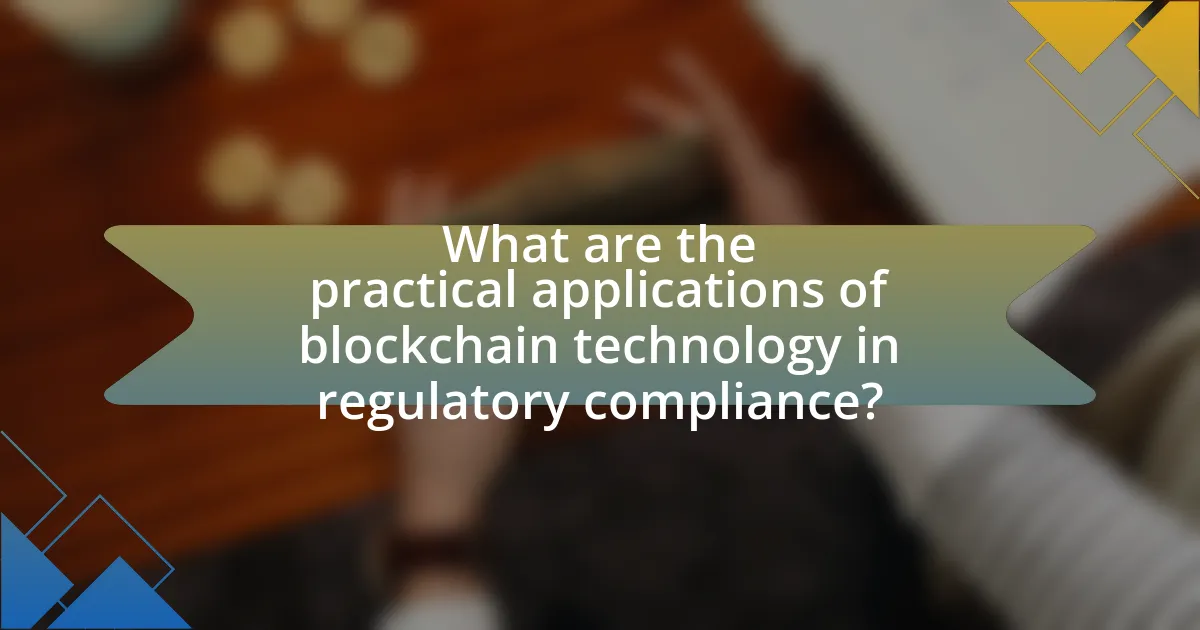
What are the practical applications of blockchain technology in regulatory compliance?
Blockchain technology has practical applications in regulatory compliance by enhancing transparency, improving data integrity, and facilitating real-time reporting. For instance, financial institutions utilize blockchain to create immutable records of transactions, which helps in meeting anti-money laundering (AML) and know your customer (KYC) regulations. A study by the World Economic Forum highlights that blockchain can reduce compliance costs by up to 30% through automated reporting and verification processes. Additionally, supply chain management employs blockchain to ensure traceability and authenticity of products, aiding compliance with safety and quality regulations. These applications demonstrate how blockchain can streamline compliance efforts while ensuring adherence to regulatory standards.
How are different industries utilizing blockchain for compliance purposes?
Different industries are utilizing blockchain for compliance purposes by enhancing transparency, traceability, and data integrity in their operations. For instance, the financial sector employs blockchain to ensure compliance with anti-money laundering (AML) regulations by providing immutable transaction records that can be easily audited. The pharmaceutical industry uses blockchain to track the supply chain of drugs, ensuring compliance with regulations like the Drug Supply Chain Security Act (DSCSA) by verifying the authenticity of products and preventing counterfeit drugs. Additionally, the food industry leverages blockchain to trace the origin of products, which helps comply with food safety regulations by enabling quick responses to contamination issues. These applications demonstrate how blockchain technology effectively supports regulatory compliance across various sectors by providing reliable and verifiable data.
What specific use cases exist in the financial sector?
Specific use cases of blockchain technology in the financial sector include transaction settlement, fraud prevention, and regulatory compliance. Transaction settlement utilizes blockchain’s ability to provide real-time, secure, and transparent record-keeping, significantly reducing the time and cost associated with traditional settlement processes. For instance, the use of blockchain in cross-border payments can decrease settlement times from days to minutes, as demonstrated by Ripple’s technology.
Fraud prevention is enhanced through blockchain’s immutable ledger, which allows for the tracking of transactions and verification of identities, thus reducing the risk of fraudulent activities. A notable example is the implementation of blockchain in Know Your Customer (KYC) processes, where multiple financial institutions can share verified customer data securely.
Regulatory compliance is facilitated by blockchain’s transparency and traceability features, enabling financial institutions to maintain accurate records for audits and regulatory reporting. The European Union’s General Data Protection Regulation (GDPR) compliance is an example where blockchain can help ensure data integrity while allowing for the necessary data access controls.
How is blockchain being used in supply chain management for compliance?
Blockchain is being used in supply chain management for compliance by providing a transparent and immutable ledger that records every transaction and movement of goods. This technology enables companies to track the provenance of products, ensuring that they meet regulatory standards and compliance requirements. For instance, in the food industry, blockchain allows for real-time tracking of food items from farm to table, helping to verify that they adhere to safety regulations. A study by IBM and the Food and Drug Administration found that blockchain can reduce the time needed to trace food products from days to seconds, significantly enhancing compliance with safety regulations.
What best practices should organizations follow when implementing blockchain for compliance?
Organizations should follow several best practices when implementing blockchain for compliance, including ensuring data integrity, establishing clear governance frameworks, and maintaining transparency. Data integrity is crucial as blockchain’s immutable nature helps prevent tampering, which is essential for compliance with regulations like GDPR and HIPAA. Establishing a governance framework involves defining roles, responsibilities, and processes for managing blockchain operations, which aligns with compliance requirements. Transparency is vital, as it allows stakeholders to audit transactions and verify compliance with regulatory standards. These practices collectively enhance trust and accountability, which are fundamental for meeting regulatory obligations.
How can organizations ensure data integrity on the blockchain?
Organizations can ensure data integrity on the blockchain by implementing robust consensus mechanisms and cryptographic techniques. Consensus mechanisms, such as Proof of Work or Proof of Stake, validate transactions and prevent unauthorized changes, ensuring that only legitimate data is recorded. Additionally, cryptographic hashing secures data by creating unique identifiers for each block, making it nearly impossible to alter information without detection. For instance, the Bitcoin blockchain employs SHA-256 hashing, which has proven effective in maintaining data integrity since its inception in 2009. These methods collectively reinforce the reliability and accuracy of data stored on the blockchain, thereby supporting regulatory compliance.
What strategies can enhance collaboration between regulators and blockchain developers?
Enhancing collaboration between regulators and blockchain developers can be achieved through the establishment of clear communication channels. These channels facilitate ongoing dialogue, allowing both parties to share insights, concerns, and updates regarding regulatory requirements and technological advancements. Regular workshops and joint task forces can further promote understanding of blockchain technology among regulators, while developers gain insights into compliance expectations.
Additionally, creating sandbox environments enables regulators to test blockchain applications in a controlled setting, fostering innovation while ensuring compliance with existing laws. This approach has been successfully implemented in jurisdictions like the UK and Singapore, where regulatory sandboxes have led to the development of compliant blockchain solutions.
Furthermore, developing standardized frameworks for compliance can streamline the regulatory process, making it easier for developers to align their projects with legal requirements. This strategy has been supported by organizations such as the International Organization for Standardization (ISO), which works on establishing global standards for blockchain technology.
By implementing these strategies, both regulators and blockchain developers can work together more effectively, ultimately leading to a more robust regulatory landscape that supports innovation.
What future trends can we expect in blockchain technology and regulatory compliance?
Future trends in blockchain technology and regulatory compliance include increased integration of smart contracts for automated compliance, enhanced transparency through decentralized ledgers, and the development of regulatory frameworks tailored to blockchain applications. Smart contracts can execute compliance checks automatically, reducing human error and increasing efficiency, as evidenced by projects like Ethereum’s compliance solutions. Furthermore, decentralized ledgers provide immutable records that enhance audit trails, which regulators increasingly favor for transparency. Regulatory bodies are also beginning to establish guidelines that specifically address blockchain technology, as seen in jurisdictions like the European Union, which is working on the Markets in Crypto-Assets Regulation (MiCA) to create a comprehensive regulatory framework.
How might advancements in blockchain technology shape future compliance frameworks?
Advancements in blockchain technology will likely enhance future compliance frameworks by enabling real-time data sharing and immutable record-keeping. These features allow organizations to maintain transparent and auditable trails of transactions, which can significantly reduce the risk of fraud and non-compliance. For instance, the use of smart contracts can automate compliance checks, ensuring that regulations are adhered to without manual intervention. According to a report by the World Economic Forum, blockchain can streamline compliance processes, reducing costs by up to 30% in certain sectors. This efficiency not only improves regulatory adherence but also fosters trust among stakeholders, as all parties can verify compliance independently through the blockchain ledger.
What role will artificial intelligence play in enhancing blockchain compliance solutions?
Artificial intelligence will significantly enhance blockchain compliance solutions by automating the monitoring and analysis of transactions for regulatory adherence. AI algorithms can process vast amounts of data in real-time, identifying patterns and anomalies that may indicate non-compliance or fraudulent activities. For instance, a study by the World Economic Forum highlights that AI can improve the efficiency of compliance processes by up to 30%, allowing organizations to respond swiftly to regulatory changes and reduce the risk of penalties. This integration of AI with blockchain technology not only streamlines compliance efforts but also increases transparency and trust in the system, as AI-driven insights can provide verifiable audit trails.










